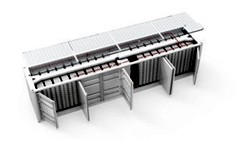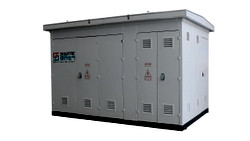The electricity grid is evolving, and the introduction of electronic smart meters is a key component of this transformation. These meters provide a more detailed and accurate measurement of energy usage, which is beneficial for both consumers and utilities. One of the most significant benefits of smart meters is their ability to enable demand response programs and dynamic pricing.
Demand Response Programs
Demand response programs are designed to reduce the overall electricity demand during peak periods. These periods are typically when the demand for electricity is highest, such as on hot summer afternoons. During these times, utilities can struggle to keep up with the demand, and may need to resort to using more expensive and less environmentally friendly forms of power generation.
Smart meters can play a critical role in demand response programs by providing utilities with real-time data on energy usage. This data can be used to identify periods of peak demand and to send signals to consumers to reduce their energy consumption during those times. For example, consumers could be encouraged to delay using appliances like washing machines or dishwashers until later in the evening, when demand is lower.
By reducing overall electricity demand during peak periods, demand response programs can help utilities to avoid the need for expensive and polluting power generation methods. This can help to reduce greenhouse gas emissions, improve air quality, and keep energy prices more affordable for consumers.

Dynamic Pricing
Dynamic pricing is another important use of smart meters. With dynamic pricing, the price of electricity varies depending on the time of day and overall demand. During periods of peak demand, electricity prices can be higher, while prices may be lower during times of low demand.
Smart meters provide the data needed to implement dynamic pricing effectively. Consumers can be charged different rates for electricity depending on when they use it. This can encourage consumers to shift their energy usage to periods of lower demand when prices are lower.
Dynamic pricing can help to reduce overall electricity demand during peak periods and encourage the use of renewable energy sources. By providing consumers with real-time information on energy prices, they can make more informed decisions about when to use energy-intensive appliances like air conditioning units.
Takeaway
The introduction of electronic smart meters is a significant step forward in the evolution of the electricity grid. Smart meters provide utilities with real-time data on energy usage, which can be used to implement demand response programs and dynamic pricing. These programs can help to reduce overall electricity demand during peak periods, encourage the use of renewable energy sources, and keep energy prices more affordable for consumers. As the electricity grid continues to evolve, smart meters will play an increasingly important role in ensuring its reliability and sustainability.
We welcome any questions you may have regarding our smart meters, tariff structures or system solutions, and encourage you to reach out to us without hesitation.
Editor's note: This article was originally published in April 2023 and has been updated for comprehensiveness.





All comments are moderated before being published. Inappropriate or off-topic comments may not be approved.